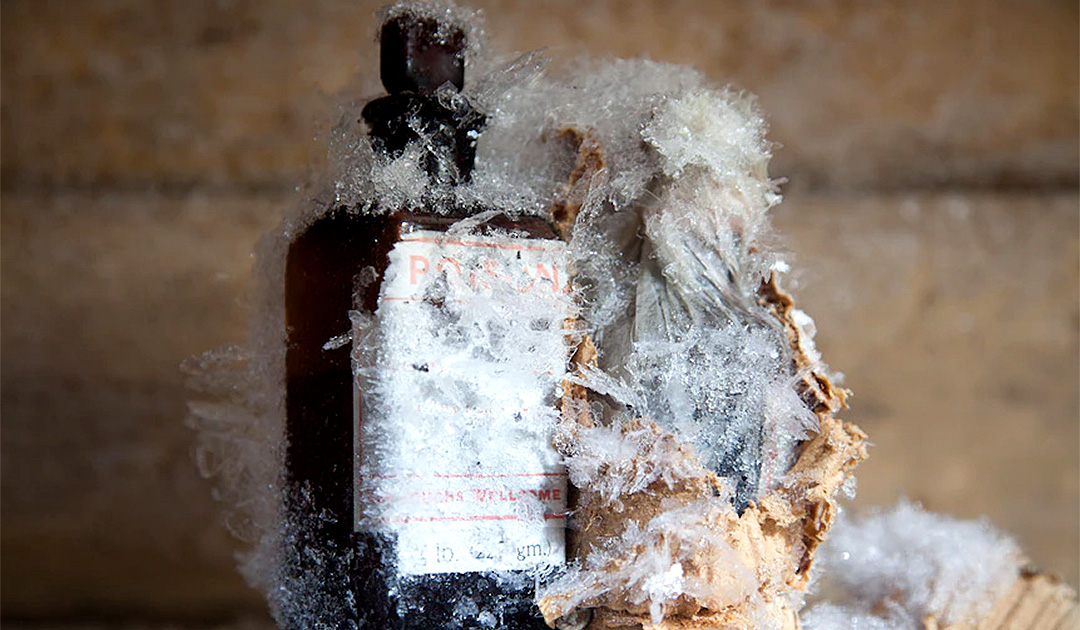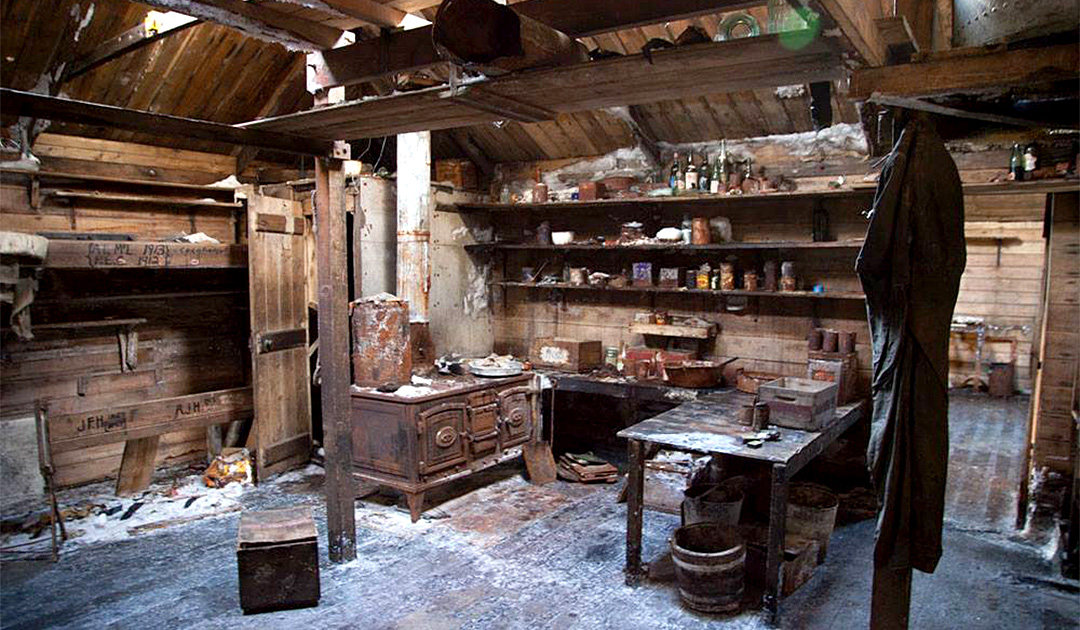
Microscopic germs flourish in the frames of the shelters built during the heroic age of polar exploration. The global warming accelerates their activity which endangers the cultural heritage of these regions.
Surrounded by snow, rock and ice, old polar laboratories are crumbling. Many buildings and heritage objects, such as trapper’s cabins or the remains of whaleboats, are being affected by fungi. At the North Pole as well as at the South Pole, they attack the wood of these buildings, and the global warming accelerates the budding of these molds. Anne-Cathrine Flyen and Alma Elizabeth Thuestad, from the Research Institute for Cultural Heritage in Norway, say so in a state-of-the-art paper. “A large majority of the polar historical monuments have already been attacked by these ferments”, explains Anne-Cathrine Flyen.
In the 2000s, the idea that cold weather kept wooden buildings free of germs gradually fell apart. In 2011, Anne-Cathrine Flyen discovered traces of fungi in structures in the north of Svalbard. Then, at the base of the pylons of the old Longyearbyen cable car, brown spots split the wood fiber. In the past its wagons carried coal. Nine years later, other scientists are discovering that heritage buildings in Greenland and the Canadian Arctic are being weakened by tunneling bacteria. In 2017, scientists revealed the presence of fungi in the remains of the whaling station on Deception Island. There is no longer any doubt that polar heritage conservation professionals are facing a major challenge.

Among the 250 species of insects that are inventoried in Svalbard, none of them nibble on the heritage. The same is true in the other regions. The threat comes from the infinitely small. The wood serves as a substrate for the fungi. Their filaments slip between the cells of dead wood, then cut through the lignin walls and cellulose. Little by little, they come to the end of its solidity. Brown rots break the wood into cubes while white rots turn the wood into a sponge. Bacteria also work on the disappearance of architectural pieces. In winter, this silent world goes dormant and then the heat of summer awakens their appetite.
In Antarctica, 30 of the 95 historic sites have wooden structures. The first ones date from 1820, built in the South Shetlands. According to the authors, the period during which whaling stations and ships equipped with measuring instruments were built, corresponds to the heroic age of exploration, between 1897 and 1922. Time of the quest for the magnetic South Pole for example. In Svalbard, more than 2,000 sites are concerned, vestiges of Russian activity (1700-1850), then Norwegian from 1800. Native Arctic heritage sites are also at risk, but the presence of timber is less common.

“Painting is not a solution, it locks the mold into the wood that continues to work. And there is no method that can save the cultural heritage forever. Sooner or later, these buildings will fade from view. In the meantime, some maintenance work might slow their wear and tear. But in these parts of the world, they are extremely expensive. ” says Anne-Cathrine Flyen.
For the researcher, it is important for each state to develop its conservation strategy and to rank the monuments it wishes to conserve in order of importance. If repair work is too costly, it is always possible to make a replica. But in this case, a part of the information that the monument carried until then, disappears forever.
Camille Lin, PolarJournal
Learn more about this topic:





